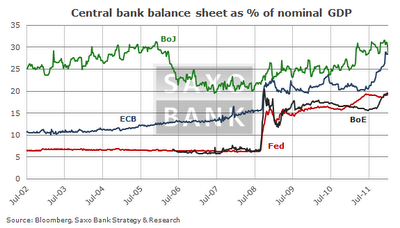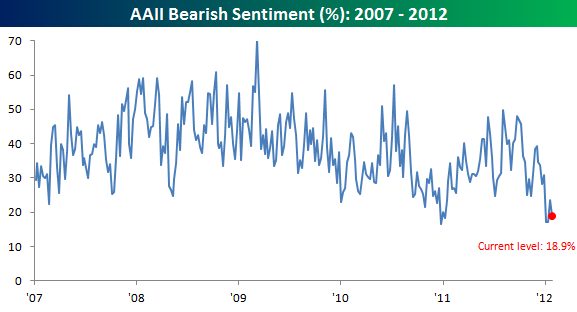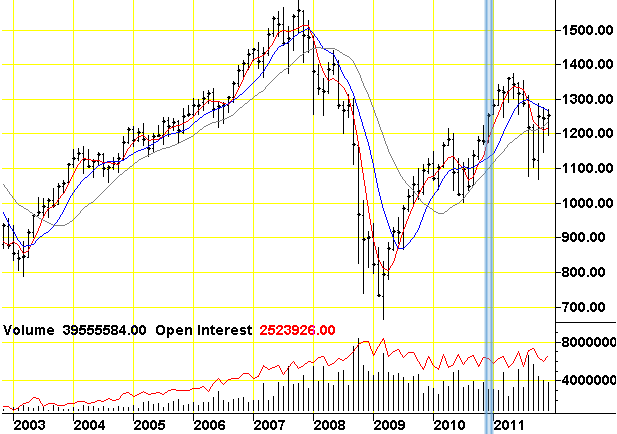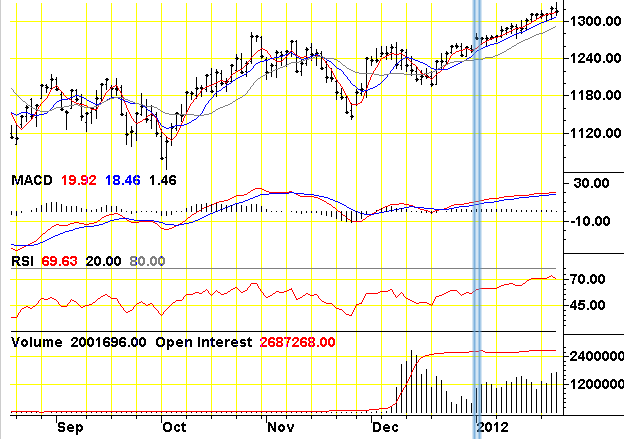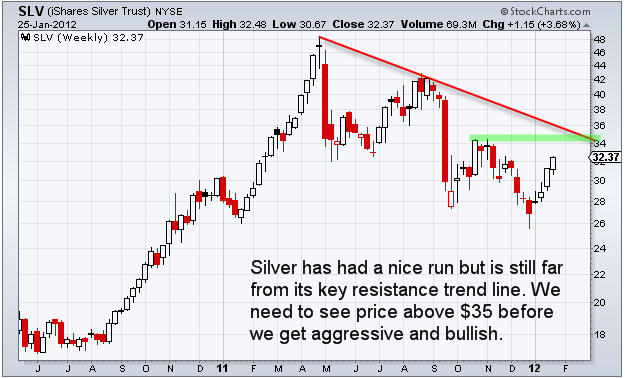Kwong-Mun Achong Low, an analyst with Northern Securities in Canada, thinks that copper and gold juniors are in for a better run this year. The Gold Report,Achong Low discusses why copper may have a slight edge on gold in 2012 and what companies are the crown jewels of his coverage list.
The Gold Report: Kwong, what are some themes or common ground within your Buy recommendations in the junior mining space?
Kwong-Mun Achong Low: When I look to initiate coverage of a company, I go through a checklist of must-haves with emphasis on the management team and the assets. Excelsior Mining Corp. (MIN:TSX.V),Golden Predator Corp. (GPD:TSX), Probe Mines Ltd. (PRB:TSX.V) and Sunridge Gold Corp. (SGC:TSX.V)have solid management teams with proven track records and they’ve either built and sold companies before or they have tremendous experience in the countries that they operate in. All of those companies’ flagship assets are close to infrastructure, and they have a clear path to production. They’re not just speculative stories. They also have good streams of news to keep investors interested and are supported by the commodities that they are focused on, which are gold or copper.
TGR: Even very good news wasn’t really moving share prices a lot in the last half of 2011. Do you expect that to change in 2012? Will good drill results move share prices this year?
KAL: I think so, but a lot of the speculation has come out of the space. Really and truly, things were looking dire at the end of 2011, in part because of redemptions of funds and tax-loss selling. This year, investors will look at the quality projects and, when good drill results come out, they’ll say, “Okay, we’ll reward this company because it continues with good news.” I think share prices will respond to suit.
TGR: Are you more bullish on copper or gold in 2012?
KAL: The underlying fundamentals of both are still pretty good. Gold’s use as a store of value should be of real interest to investors because of the ongoing quantitative easing and the loose monetary policies by central banks that are devaluing major currencies. Historically, gold has responded well to that.
For copper, our bullish case comes from supply-demand fundamentals. Many commodity houses are forecasting a supply deficit for 2012. For instance, stockpiles in Asia as tracked by the London Metal Exchange (LME) are at a two-year low and heading lower, which is likely because China is buying and stockpiling copper again. The broader LME stocks are at a one-year low and also heading lower. That’s really good for copper and gives it an edge over gold this year.
TGR: But copper was down about 3.5% last year.
KAL: It just got caught up in all of the economic worries. When you go back to basics, which are supply-demand fundamentals, copper is still a really good story.
TGR: Northern Securities’ 2012 Top Picks List includes Golden Predator and Probe Mines, but not Sunridge or Excelsior. What factors put Golden Predator and Probe above the others?
KAL: At the time we chose those two names to highlight, the stock market was more volatile and investors were in a real risk-adverse mood.
Golden Predator stood out because it’s in the Yukon, which is a good mining jurisdiction. It has near-term production potential and current cash flow from its royalty portfolio. In a real cash crunch, it would come out OK.
Probe Mines, in Ontario, came on the scene with a really good resource update. It has a good opportunity for more resource growth, which puts it on a short list of takeover candidates.
TGR: Would it surprise you if the companies not on the top picks list outperformed those that are?
KAL: No, not at all. Both Sunridge and Excelsior are solid companies with robust assets. Sunridge has four polymetallic deposits in close proximity to one another. The biggest deposit, Emba Derho, is of world-class size by itself. It’s a 62 million tonne (Mt) volcanic massive sulphide (VMS) deposit with almost 0.6 million ounces (Moz) gold, nearly 1 billion pounds (Blb) copper and 2 Blb zinc. Something that size could attract takeover potential as well.
Excelsior’s preliminary economic assessment (PEA) on the Gunnison copper project in Arizona in December really impressed me. It could advance its project quickly to production and I would put it on a short list for potential acquirers given the project economics.
TGR: What in that PEA did you find particularly interesting?
KAL: It’s expecting annual production of 85 million pounds (Mlb) copper for a capital expenditure of $240 million (M). Not many companies could do that. If it builds a sulfuric acid plant for $85M, it could get its cash costs down from a projected $0.94/pound (lb) to about $0.68/lb. That could make it one of the lowest cash-cost producers in the copper space.
TGR: It plans to use in situ recovery, which involves drilling holes into a land mass, injecting liquid into those holes and then pumping it out and recovering the metals in those liquids. Given the recent concerns regarding fracking in the oil and gas space, do you expect getting environmental permits could pose a problem?
KAL: I’m not concerned with Excelsior getting its permits because the same process has been successfully permitted and used in the past in Arizona during the 1980s and 1990s. In situ recovery is often misunderstood because it’s not commonly used in the copper industry though it is quite common in the U.S. uranium industry. When at full operation, more of the dissolving liquid is removed than is pumped into the ground. That creates a cone of depression where the basic physics of high and low pressure prevents any fluid from traveling where it’s not supposed to go.
TGR: What catalysts are going to push Excelsior, which currently trades around $0.57/share, to your 12-month target of $2/share?
KAL: It intends to do a prefeasibility study by the end of this year. To do that, it will have to continue with its hydrology and metallurgical studies. Even though the initial tests came back positive and show a good case for in situ recovery, investors would be happy to see more detailed tests confirming those results. That should push this toward the target.
TGR: Golden Predator, which is the largest holder of active exploration properties in the Yukon, receives royalty payments from a property portfolio in Nevada. What sort of cash flows are those royalties creating and how is Golden Predator using that cash?
KAL: The land package and the royalty portfolio are two of the best things about Golden Predator. It already has cash flow coming in, which could be used for general and administrative expenses or to offset large financings. We expect about $1M in royalty payments this year, gradually increasing to about $8M by 2015. Also, as the company has done before, non-core segments in the royalty portfolio and land package could be monetized for additional gains.
TGR: Golden Predator released some results from the Sleeman zone on the Brewery Creek project in the Yukon recently. One hole returned 35.1 meters (m) of 1.63 grams per tonne (g/t) gold and 136.72 g/t silver. Within that intercept, there were 20m of an even higher grade intercept. What were your impressions of those results?
KAL: They were quite good. It’s not often that we see a sizable silver intercept at Brewery Creek, but that adds another dimension to go along with the gold. One of the holes on the westernmost part of Sleeman returned some decent results as well, showing that the zone is still open in all directions. That step out hole would not be included in the resource update at the end of January. Because of this, and the over 100 holes to be assayed, the company is planning another resource update for the middle of the year.
TGR: Golden Predator has a number of properties. Do you think as these sorts of results come back that it will begin to focus more on Brewery Creek than the others?
KAL: It already is focusing mostly on Brewery Creek given its near-term production potential possible because of its past-producer status. So Brewery Creek is both an exploration story with the good drill results it keeps returning and also a development story that could see itself in production by the end of the year. The other properties will also see some drilling this year and could add production growth a few years down the line, but they are not the focus now.
TGR: What other catalysts are you expecting to take Golden Predator to your 12-month target of $1.60/share?
KAL: It still needs to come out with some engineering tests on the existing heap-leach pad to see if a quick production start-up is possible. Those are due in the next few months and if they continue to show that it can start production sooner than most people think, that should really push the stock up.
TGR: Golden Predator has made some management changes. Do you think those are positive?
KAL: Definitely. It hired a chief operating officer and a chief mining engineer, which shows that it really is gearing up for production.
TGR: Probe Mines has gone from being primarily a chromite play to a gold play. The junior now sits with a resource of almost 5 Moz at the Borden Lake project in Northern Ontario. In 2009, Osisko Mining Corp. (OSK:TSX) bought out Brett Resources Inc. (BBR:TSX.V), which had a resource of similar size in Northern Ontario. It’s a distance away, but there are some similarities. Do you believe Probe is a takeover target?
KAL: I think so. Probe really has reinvented itself and capitalized on its grassroots Borden Lake gold discovery. It is expecting another resource update later on in this quarter, which should get it past the critical 5 Moz mark and put it on the radar for intermediate and senior producers. The orientation and structure of the ore body are close to ideal for mining a low-grade, bulk-tonnage deposit. A lot of that resource will end up mineable, and that’s what companies are looking for.
TGR: Have you visited that project?
KAL: I have. Dave Palmer, the chief executive officer, really keeps a close eye on what’s going on there and he regularly takes analysts and investors up to the property. What I really like about the project is that it’s about a 15-minute drive from the airstrip and the town of Chapleau, and you can walk straight from the road to the drill rig.
TGR: What are some catalysts we can expect in 2012 for Probe?
KAL: Apart from the updated resource, it also has some further metallurgical studies and drill results coming due. What I like about Borden Lake is that there are some really good geophysics in the northern part of the property that show that it could have another main Borden Lake deposit there. It’s drilling that now and if successful, that could easily double the resource.
TGR: Are you saying it could hit 10 Moz?
KAL: It could, but it may not this year. If it hits some good results up to the north, it could get really big.
TGR: If that’s the case, then it must be a takeover target.
KAL: For sure.
TGR: In a report, you suggest that Sunridge Gold is one of the more misunderstood stories in the junior gold sector. What misconceptions about Sunridge would you like to correct?
KAL: The biggest misconception is that Eritrea is a bad place to do business. I visited the property in November and saw firsthand that it is a very determined country working to put additional business-friendly policies in place. The people are very friendly and hard working. The United Nations Security Council clouded that view when it put further sanctions on the country in December after some neighboring countries accused it of supporting militant groups, but I think the accusations are politically motivated. Russia and China both abstained from the vote. Also, Russia went on record saying that the evidence of Eritrea’s link to the planned attacks in Addis Ababa was not conclusive.
TGR: But there is unrest in the region. Are you factoring that into a discount rate?
KAL: Definitely. Whether it’s true or not, the market does perceive additional risk in Eritrea. We only use a multiple of 0.4x our net asset value whereas other companies in our space could get from 0.5–1.0x.
TGR: What were your thoughts about the Asmara project when you visited?
KAL: It is very close to infrastructure. You can drive to the site in a matter of minutes. The topography is very supportive of open-pit mining as it is very flat with lots of room to put the mill facilities and tailings pond. It’s also very close to a willing workforce.
TGR: Are there any majors operating in Eritrea right now?
KAL: None that I know are active in the area. There are a number of Chinese companies with interest including the Shanghai Construction Group that recently bid for Chalice Gold Mines Ltd. (CXN:TSX; CHN:ASX), though the others have nothing as advanced as Sunridge or Nevsun Resources Ltd. (NSU:TSX; NSU:NYSE.A).
TGR: Does Nevsun have the cash flow to pull off a takeover?
KAL: For sure. It is producing a lot of gold at one of the lowest cash operating costs in the industry. Last year it produced about 380 thousand ounces of gold and the cash costs for the first three quarters were about $285/ounce (oz). However, I’m not sure that, if it were to expand, it would want to get another asset in Eritrea.
TGR: On the one hand, you’re saying there’s not as much risk as people think, but in this example, you are intimating that there is still a significant amount of risk there?
KAL: There is perceived risk. If a company like Nevsun has a main asset there and it’s not getting the full value that it should for it, then there’s no need to wait around for the market to clue in. It can just take its cash and go after something that the market will recognize.
TGR: What should move Sunridge stock to your 12-month target price of $1/share?
KAL: Of its four main deposits, it has combined three of them into one prefeasibility study due out in about four months. The fourth deposit, the Debarwa deposit to the south of Asmara, has a feasibility study due in the next couple of months. As the market sees that there is real economic benefit to these projects and there is a clear line to their production, Sunridge should get rewarded for that.
TGR: Debarwa is really the crown jewel here, right?
KAL: It’s the highest grade and it may be the closest to production, though I think the crown jewel is Emba Derho, with 62 Mt of VMS.
TGR: What’s the resource there?
KAL: It’s almost 600,000 oz gold, 1 Blb copper and 2 Blb zinc at Emba Derho.
TGR: What’s the estimated production timeline there?
KAL: It could be as early as 2015. After the feasibility is completed, it could start applying for its permits. Sunridge has already started talking with government officials, so I don’t think that will take as long as it has for other companies, like Nevsun.
TGR: Are there any other companies that you would like to discuss today?
KAL: It’s not one that I cover, but it is in a very stable country: Seafield Resources Ltd. (SFF:TSX.V:). It is advancing its Quinchia gold project in Colombia. It is expecting a resource update at its Miraflores deposit by the end of this month and a PEA in a few months. Quinchia currently has 2.5 Moz in global resource and with the new management appearing settled, the relative valuation and news flow makes this stock one to watch.
TGR: Do you have some parting thoughts for our readers?
KAL: Investors need to take the speculation out and do additional due diligence because it’s a stock-picking market. Investors need to look for companies that have good news flow, really good management and an asset that is good enough to put into production when they invest in it.
TGR: Thanks.
Kwong-Mun Achong Low is a mining analyst with Northern Securities with a focus on both precious and base metal equities. He previously worked at a Canadian bank owned dealer and at a U.S.-based brokerage. Achong Low obtained both his Master of Business Administration and Bachelor of Science degree in mechanical engineering from the University of Toronto.
Want to read more exclusive Gold Report interviews like this? Sign up for our free e-newsletter, and you’ll learn when new articles have been published. To see a list of recent interviews with industry analysts and commentators, visit our Exclusive Interviews page.

